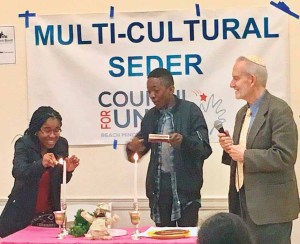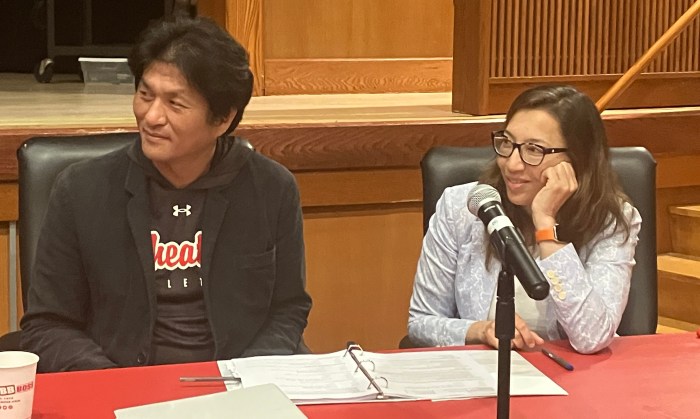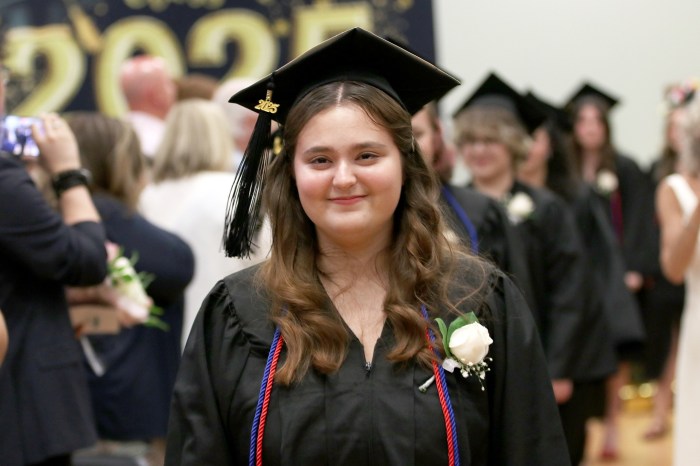Council For Unity teaches confidence and conflict resolution
What does it take to keep a community from becoming the next target for gang violence? If you ask middle school social worker Lewis White, sometimes prevention can be as easy as having a safe space to have honest conversation.
With recent gang-related slayings in Brentwood and Central Islip and the arrest of three MS-13 members in the Westbury/New Cassel area, communities have been asking what they can do to protect children and teens from giving into the allure of joining gangs.
It’s a question members of the Westbury community have asked as well, especially after what White described as “low level gang involvement” in the middle school last year. While those students were removed from the school district, administration recognized the need for a program to minimize any potential problems.
Thus, Council for Unity was born. The national program started 40 years ago in Brooklyn as an attempt to promote family, self-esteem, tolerance, achievement and other life skills as a deterrent to gang involvement, bullying and conflict.

The Westbury School District launched the nonprofit organization’s afterschool program at the middle school in December, and response has been “more than I ever imagined,” said White.
Three times a week, a group of approximately 15 students voluntarily meet to talk about whatever is on their mind. Issues range from dating and relationships, to family conflicts, to dealing with feelings of fear, anxiety and isolation.
“Kids are hungry for this stuff. It’s real emotional stuff,” White said. “In the classroom we talk about math and social studies, but this stuff gets to the core. It’s real stuff they don’t get into much and the kids are starving for it. It allows them a chance to be authentic and real.”
Students sometimes work through curriculum designed by Council for Unity, but other times will just talk through problems they’re facing. While Council for Unity’s original mission is gang-prevention, the middle school’s program caters to all students, whether they’re at risk for violence or just frustrated with a family problem. Working through their conflicts at Council meetings helps students know they don’t have to resort to gangs or violence, said White.
“Council shows them there’s a place they can go where they can feel validated and welcome and not judged,” said seventh-grade special education teacher Daniel Chavez, who co-leads the group with White. “Council tries to teach them they belong and there’s a family they can go to that will support them. That approach is trying to get them to see they can make positive changes in their lives, a little bit at a time.”
Though the program is fairly new, Chavez and White both say they can see the change in students who regularly attend. Students are less agitated and rowdy and more confident. Grades and attendance have also improved, and discipline referrals have decreased.
“You can just see the maturity that has developed in them,” White said. “They are more settled and more comfortable in who they are in themselves.”
Chavez recalls one eighth-grade student, who in December, would continually call out and was easily distracted.
“Now she’s become a leader in our group,” he said. “She listens when her peers are sharing, she expresses her needs more effectively. She’s a lot calmer during the day. She seems more relaxed and not as confrontational. It’s like two different people.”
White said that students have often asked him to hold the program every day, instead of just three times a week and 15 of the middle school’s Council members will be inducted into the worldwide Council for Unity at an induction ceremony at Crest Hollow Country Club on May 12. He and Chavez are both hoping in the near future, Council for Unity can be rolled out to both the high school and elementary school levels.
“The kids are really enthusiastic about it and really take a liking to it,” Chavez said. “We’re teaching them how to interact with each other in a positive way. These are skills they’ll need as they get older, the ability to sit down and share with someone what’s on your mind and talk to people effectively.”
































